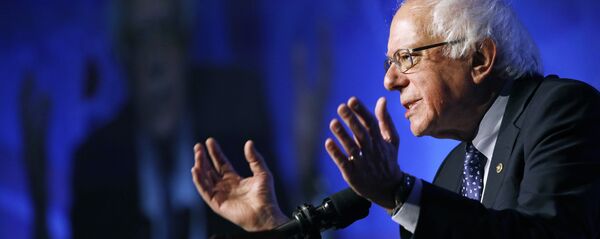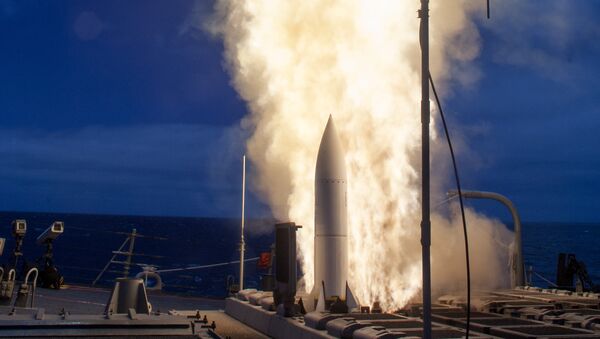Defence procurement is going to take a back seat for the next few years after a record $1.9 trillion was lavished on military expenditure globally in 2019, as experts and government officials feel that COVID-19 will force governments to readjust priorities over the next few years.
“There is already a 20 percent cut in defence budget in first quarter, which may go up further in coming quarters. Government’s priority will undergo a major change … This is not limited to this year …Health will receive priority... Defence will take a severe hit,” an Indian government official dealing in finance told Sputnik.
South Korea has said that it will decrease its defence budget by 2 per cent ($738m) and Thailand by 8 per cent ($557m). The two countries will divert this money towards a disaster-relief fund and stimulus package, respectively.
“We will analyse the model deployed by other countries to reduce the defence expenditure,” a government official added in reference to the cut in expenditure by South Korea, which also deferred payments for military equipment, such as American F-35 Lightning II fighter aircraft and the Aegis combat system.
The Stockholm International Peace Research Institute (SIPRI) - a think tank that keeps an eye on global arms deals - said on Monday that India has expanded its military expenditure due to border tensions with neighbours.
Less Room for Capital Acquisition
As salaries and pensions eat up almost 60 percent of India’s total defence budget, it is imminent that capital procurement will take a back seat.
In comparison to India’s spending on manpower, China spends only 30 percent of its total defence budget, while 40 percent of the total defence budget goes to manpower in the US.
“We must rationalise our defence expenditure on this. It is a long battle that going to last at least for the next two-three years. Share of defence in the country’s total annual budget will take a hit as the GDP growth rate will come down to 2 percent, as predicted by the International Monetary Fund,” Laxman Kumar Behera, Research Fellow at Manohar Parrikar Institute for Defence Studies and Analyses, a government-funded think tank, told Sputnik.
Behera said that currently India’s cumulative spending on health is around 3.7 percent of annual national income in comparison to over 10 percent in other countries, such as the US or China.
“After COVID-19 crisis, political leaders are more likely to spend more on the health budget and social security net, and less on weapons,” he added.
Even after the 2008 financial crisis, defence expenditures did not receive a major cut, remaining at 1.95 percent of GDP in 2008 before jumping back to 2.35 percent of GDP in 2009, which was bigger than the pre-crisis period of 2005 to 2007.
“COVID-19 makes no difference to the basics of global power politics in which national interest is best safeguarded and advanced by a strong system of national security which, in turn, requires relying almost exclusively on indigenous resources -- our own capital, talent, industry and market,” Bharat Karnad, ex-member of India’s National Security Council and Professor for National Security Studies, Centre for Policy Research, told Sputnik.
Import or Purchase from Domestic Market?
The Indian government has no other option but to re-prioritise its capital acquisition, as manpower cost is unlikely to come down in the near term.
After directing commanders in chief to identify and prioritise tasks that could be accomplished quickly, Indian Defence Minister Rajnath Singh on Tuesday directed the state-owned defence units “to prepare contingency plans for the "resumption of operations after the lifting of lockdown to compensate for the lost working time to the extent possible, and ramp up production".
Had an interaction with the DPSUs and OFB via Video Conferencing. Today’s discussion was extremely fruitful. All Defence Production organisations shared their strategies of fighting Coronavirus and also their future outlook in these challenging times. pic.twitter.com/UYhKqXnyN9
— Rajnath Singh (@rajnathsingh) April 28, 2020
“National interest is priority. We will not infuse money in other countries with the import of weapons from them. We are likely to halt international procurement for some years and procure indigenous equipment,” a senior defence official told Sputnik.
India has spent over $80 billion on defence purchases from foreign countries since 2008 despite attempts to boost domestic production of late.
India has imported weapons from the US worth around $20 billion during this period alone, while Russia remains the country’s top arms supplier.
“Arms self-sufficiency is the foundation stone for the exercise of sovereignty, by which metric India with its policy of unrestrained arms imports has failed enriching, in the process, the arms supplying countries are sustaining their high-value defence industries at the expense of Indian industry. The Modi government, for reasons unknown, has been hesitant in trusting in the country's strengths,” Bharat Karnad said.

Defence experts, unanimously, believe that the post COVID-19 economy will definitely bring cheer for the domestic defence manufacturers, while foreign firms will have to wait for large new orders from the Indian government despite tensions with Pakistan.







